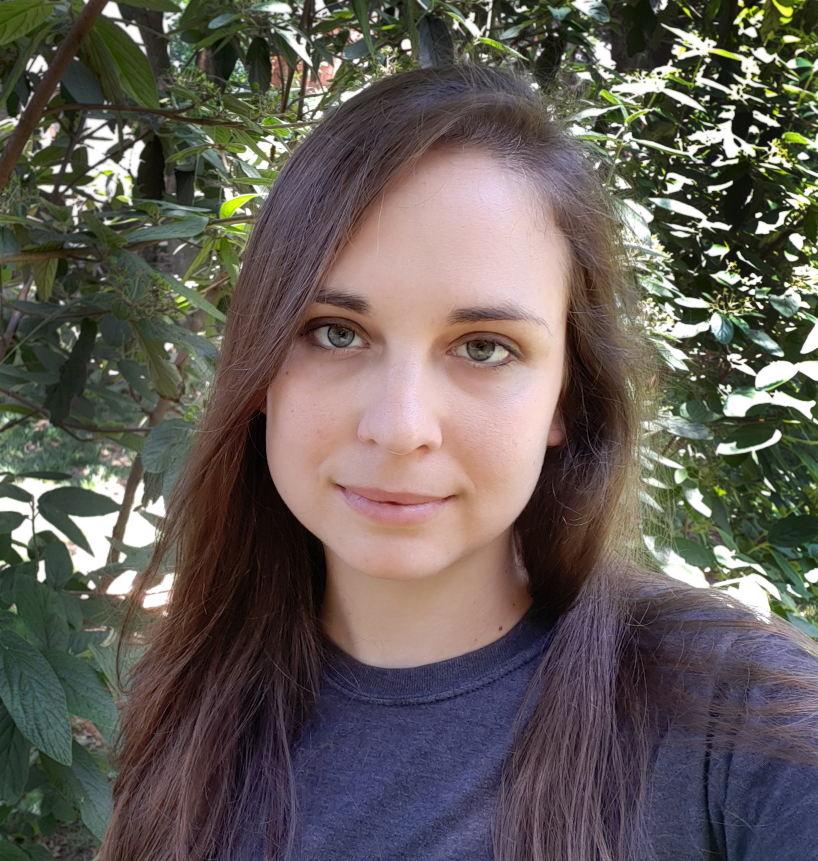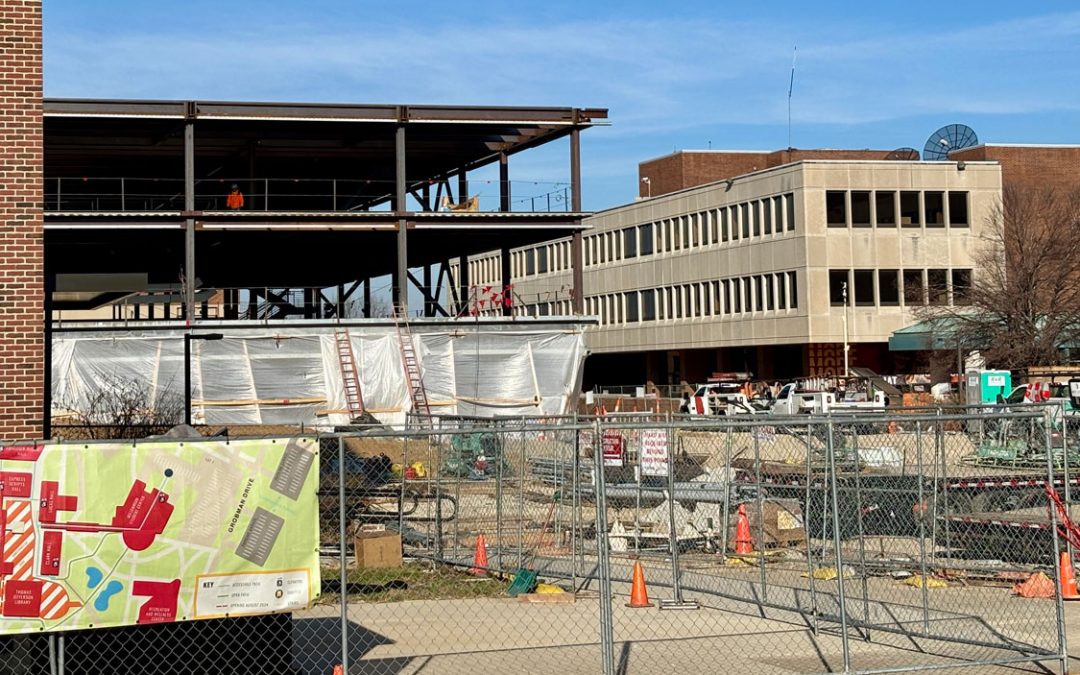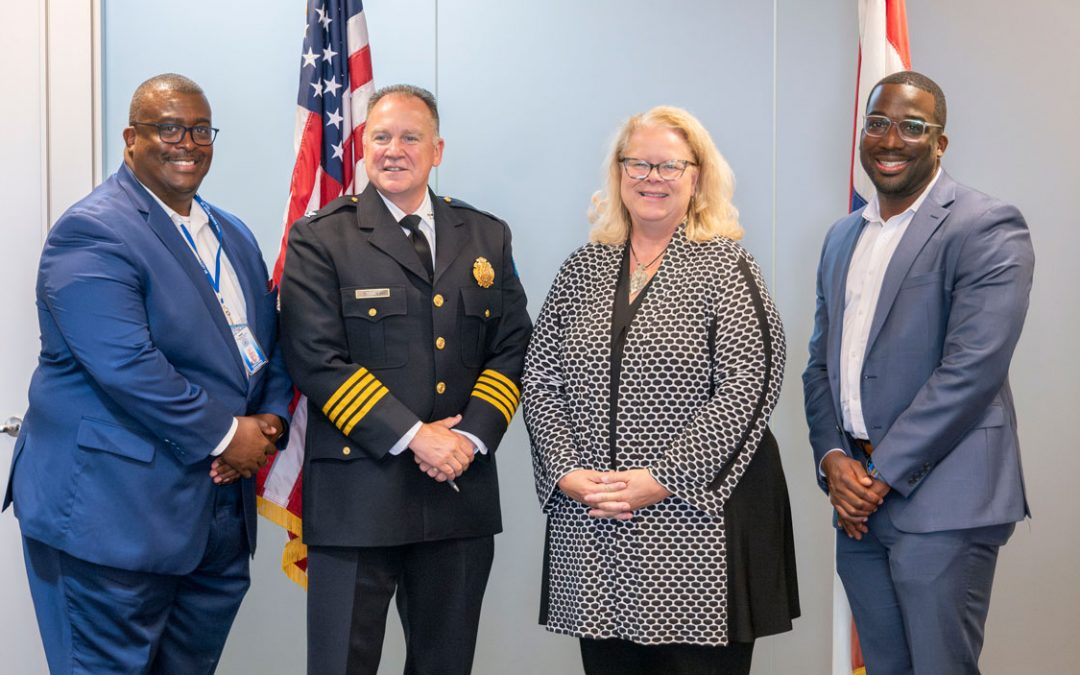
Ann Johnson puts the final touches on a lighting project. The former political science major began creating show lighting and art projects as a hobby and is now pursuing a degree in electrical engineering. (Photo by Tyler Small)
Ann Johnson’s path to becoming an electrical engineer resembles the twisting and turning route of a roller coaster, and she’s loved the surprises it’s brought.
The St. Louis area native planned to become a lawyer or an advocate when she graduated from Washington University in St. Louis with a political science degree in 2011. But she soon found her chosen career exhausting.
As her interest in law waned, Johnson discovered a passion for creating lighting displays. That led her to the University of Missouri–St. Louis/Washington University in St. Louis Joint Undergraduate Engineering Program and the Pierre Laclede Honors College, where she will complete an electrical engineering degree in 2022.
“Through doing these side art projects for a couple years – at the time it was just a hobby – I learned that I really loved working with it, and I really enjoyed the challenge of learning more about the pieces in the electrical system,” she said. “I loved the challenge of trying to design an art piece that could survive out in the field for many hours.”
Johnson’s path to electrical engineering began when she became involved with the food scene in St. Louis, where her passion for advocacy in the local community combined with her interest in sustainability and the environmental impact of farming.
Her interest in food led to a connection with the art scene as well, and she began collaborating with dancers and musicians. In 2017, Johnson designed show lighting for “Host Table,” a performance by contemporary dance theater FLO STL.
“I was able to program it and, with input from the dancers, we designed this really amazing set of lighting cues for the show,” she said. “That was an incredible experience because it was really small, really intimate. I was so close to the dancers and the performers, and we were able to pull out a lot of motion and connection.”
“Host Table” was followed by more collaborations, like building a low-resolution video wall for “Plethora,” a musical performance by Pianos for People Development Coordinator Amy Seibert.
Johnson made it her mission to learn from others, whether that involved working as an apprentice at an LED lighting company, attending training at LaunchCode or pouring hours into online research.
“I love the combination of creativity and research that goes into learning how to build something and make it happen,” she said. “From an artistic perspective, I noticed that lighting is something that makes people respond almost more than anything else in their environment that you have control over.
“Once I realized that, I was drawn to understanding it and learning how to work with it, both from an electrical perspective of how to make lighting work but also from a psychological perspective of what types of lighting make people respond in certain ways.”
Ann Johnson views each project as an opportunity to learn a new technique. She has created show lighting, a video wall, kinetic sculpture, laser jacket and more. (Photo by Ann Johnson)
She began to view each project as a chance to hone her skills. She incorporated one new technique into each display in order to master things she didn’t know how to do.
When she decided to pursue an electrical engineering degree, Johnson worried she might finish the program and then realize an engineering career wasn’t right for her. The Joint Engineering Program’s vast network of potential employers and internship opportunities reassured her.
“It was a program that was perfect for me because, from the research that I had done, it seemed as though it was geared toward widening the field and making electrical engineering accessible to more people,” she said. “Because I’m someone who has a bit of a nontraditional story, I knew they were going to have a lot of resources for people like me.”
Johnson has finished her math and science prerequisites and is now completing coursework specific to her major.
She raved about the supportiveness of her professors, particularly James O’Brien, director of graduate studies in the Department of Chemistry and Biochemistry, and James Smith, assistant teaching professor of applied mathematics.
She also landed an internship in Paradowski Creative’s Physical Technology Department, where Johnson has been helping build objects with lights, motors and custom circuit boards, as well as expanding her coding and software skills.
She used to take on a big project every three months, but classes and other responsibilities have reduced that to about two major projects a year. She’s amazed at how much she’s learned since beginning her degree program.
“You’re not going to understand it all at once,” she said. “You have to be comfortable with chiseling away. I love being able to see a progression of skill in my own work. I think it’s the most incredible thing in the world when I do something that I tried to do two years ago and I was totally baffled by it and couldn’t figure it out. Now I try it again and it’s like, ‘Oh, that’s how I do that.’”
Johnson plans to continue collaborating with other creative people throughout her career. Whether she’s building animatronics, designing educational displays or providing the lighting for stage productions, she plans to remain at the intersection of art and technology.
For her, spending 20 hours creating a laser jacket or 30 hours making a rotating kinetic sculpture is well worth the effort.
“I love watching people enjoy my work,” she said. “I really love it when people tell me they like something I’ve made or they think something that I’ve done is cool or inspiring in some way. When someone used a piece of mine for a photo shoot, I thought that was the coolest thing ever because someone else was making art out of my art.”
Check out Johnson’s latest lighting projects on her Instagram page.















